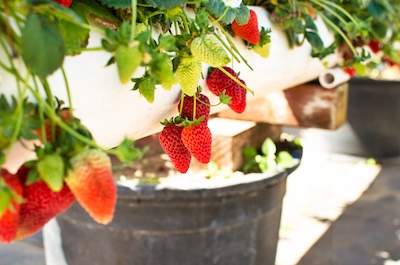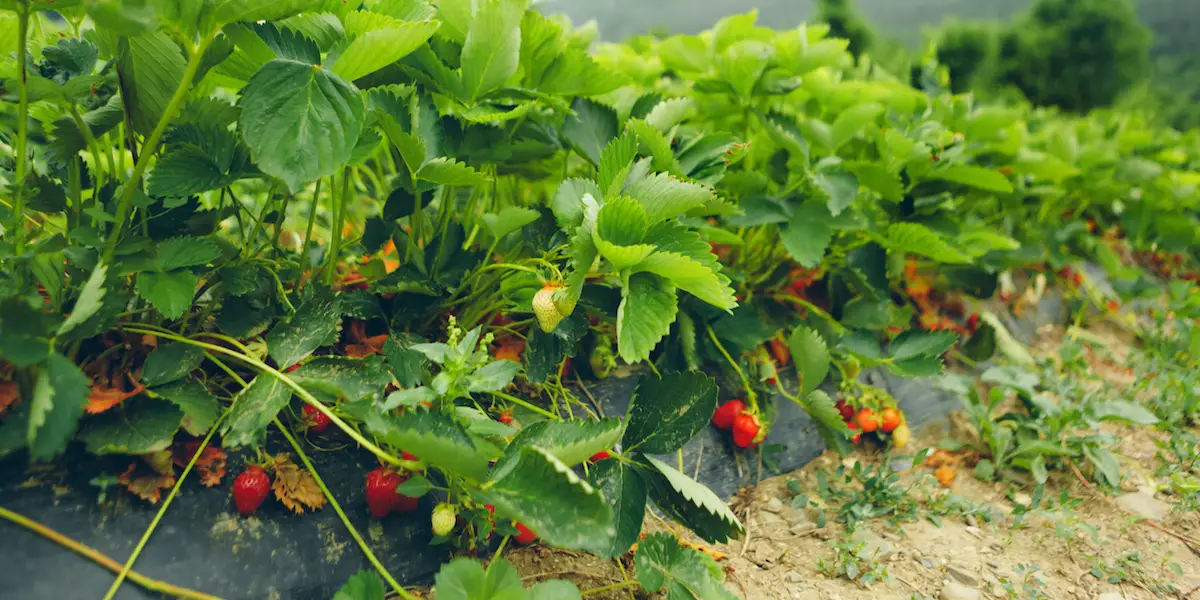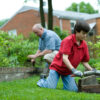How to Plant and Water Strawberries
As the temperatures warm up and we edge closer to summer, thoughts of strawberries both a healthy choice for your diet and a sweet treat will likely cross your mind more and more, and you’re not alone. As growing strawberries is a popular hobby for people of all ages. If you have a garden you know that watering your plants is an important part of keeping them healthy and producing fruit. So, how often should you water strawberries?
In general, you should water strawberries once a week. However, during hot weather or when the plants are actively growing and producing fruit, you may need to water more often. Be sure to check the soil before watering and only water if the top inch or so of soil is dry.
However, this is not all you need to know about growing and watering strawberries. So, if you are wondering what’s the best way to keep your plants healthy and producing strawberries? We’ll answer that question and more below! So read on to learn everything you need to know about watering and growing strawberries.

Are Strawberries Easy to Plant?
The answer may surprise you, but strawberries are actually one of the easiest fruits to grow! With just a little bit of care and attention, you can enjoy fresh, delicious strawberries right in your own backyard.
Here are a few tips to help you get started:
1. Start with Healthy Plants
Look for strawberry plants that are disease-resistant and have good root systems. Avoid plants that are wilted or have yellow leaves.
2. Choose the Right Location
Strawberry plants need full sun and well-drained soil. If possible, choose an area that has not been previously planted with other fruits or vegetables. This will help reduce the risk of pests and diseases.
3. Prepare the Soil
Use a garden fork or tiller to loosen the soil to a depth of about 6 inches. Add organic matter such as compost or manure to improve drainage and fertility.
4. Plant the Strawberries
Space the plants about 18 inches apart in rows that are 3 to 4 feet apart. Gently remove the plant from its container and loosen the roots before planting. Place the plant so that the crown (the point where the leaves meet the stem) is just above ground level. Backfill with soil and water well.
5. Mulch Around the Plants
This will help keep the strawberries clean and free of weeds, straw, pine needles, or black plastic work well as mulch materials.
What Types of Strawberries Are There to Plant?
When it comes to strawberries, there are many different types that you can choose from. Here is a list of the best strawberry varieties to plant in your garden:
1. June-Bearing Strawberry
These berries are some of the largest that you can find and they have a very sweet flavor. They typically ripen in late May or early June, hence their name.
2. Everbearing Strawberry
As the name suggests, these strawberries will produce fruit throughout the summer months. They tend to be smaller in size than June-bearing berries and have a slightly tart taste.
3. Day-Neutral Strawberry
Unlike other varieties, day-neutral strawberries can produce fruit all season long. They are typically small in size and have a very sweet flavor.
4. Alpine Strawberry
This variety is much smaller than other types of strawberries, but they make up for it in flavor. Alpine berries are incredibly sweet and aromatic.
5. Wild Strawberry
As the name suggests, these strawberries grow wild in many parts of the world. They are much smaller than cultivated varieties and have a more tart flavor.

When Should You Plant Strawberries?
The good news is that there are a few different times of the year that work well for planting strawberries. Here’s a look at some things to consider when deciding when to plant strawberries:
The first thing to think about is the climate where you live. If you live in an area with a long growing season, you can plant strawberries in early spring or late fall. However, if you live in an area with a shorter growing season, it’s best to wait until mid-spring to plant strawberries.
Another thing to consider is the type of strawberry you want to grow. Many of them are good to start somewhere between early May and June or in the later part of the summer when it isn’t as hot. If you’re unsure which type of strawberry to grow, ask your local nursery or gardening center for recommendations.
Once you’ve decided when to plant strawberries, it’s important to prepare the planting area properly. Strawberries prefer well-drained soil with a pH level between 6.0 and 7.0. If your soil is too acidic or alkaline, it can stunt the growth of strawberry plants.
To prepare the planting area, Till the soil to a depth of 8-10 inches and mix in some compost or manure. You can also add some organic matter, such as peat moss, to help improve drainage.
When you’re ready to plant, set the strawberry plants 18-24 inches apart in rows that are 3-4 feet apart. Space the rows farther apart if you plan on adding mulch or using a drip irrigation system.
How Much Water Is Needed to Make Sure the Strawberries Grow Well?
To make sure the strawberries grow well, you need to water them regularly. Depending on the climate, this may be once a week or more. Make sure the soil is moist but not soggy, and never let the plants dry out. Mulching with straw or other material will help keep the soil moist.
If you live in an area with high rainfall, you may not need to water your strawberries as often. However, if the weather is hot and dry, you will need to water more frequently. Overwatering can lead to fungal problems, so always check the soil before watering.
Strawberries are a thirsty crop, so make sure they are getting enough water by monitoring the moisture levels in the soil. Use a soil moisture meter or your finger to test the moisture levels. If the soil is dry, give the plants a good drink.

How Do You Take Care of Strawberries During the Winter?
When it comes to taking care of strawberries during the winter, there are a few things that you will need to do in order to ensure that they stay healthy and happy. One of the most important things to remember is that strawberries are very sensitive to cold weather and can easily be damaged by frost or freezing temperatures. This means that you will need to take extra care of them if you live in an area that experiences these conditions. Here are a few tips on how to take care of your strawberries during the winter:
1. Protect Your Strawberry Plants From the Cold By Covering Them With a Layer of Mulch
- This will help to insulate the roots and prevent them from being damaged by the cold weather.
2. Protect Your Strawberry Plants From the Frost
- However, this is only if you live in an area where there is a risk of frost.
- One way to do this is to place them in a cold frame or greenhouse.
3. Water Your Strawberry Plants Regularly During the Winter Months
- This will help to keep them healthy and prevent them from drying out.
4. Prune Your Strawberry Plants During the Winter Months to Remove Any Dead or Damaged Leaves.
- This will help to promote new growth in the spring.
5. Fertilize Your Strawberry Plants
Fertilize your strawberry plants during the winter months to ensure that they have all the nutrients they need to stay healthy and produce bountiful fruit in the spring.
Enjoying The Fruits of Your Labor
So, this was everything you needed to know about watering strawberries. Just remember to water them regularly, as once a week should be sufficient. Also, remember to fertilize your plants every few weeks and protect your strawberries from pests and diseases. The frequency may need to be increased during particularly hot weather, or if the plants are grown in pots that dry out more quickly. If you notice the leaves starting to wilt, this is a sign that they need more water. With these easy tips and a little bit of care, you can be sure to enjoy healthy and delicious strawberries all year round!










